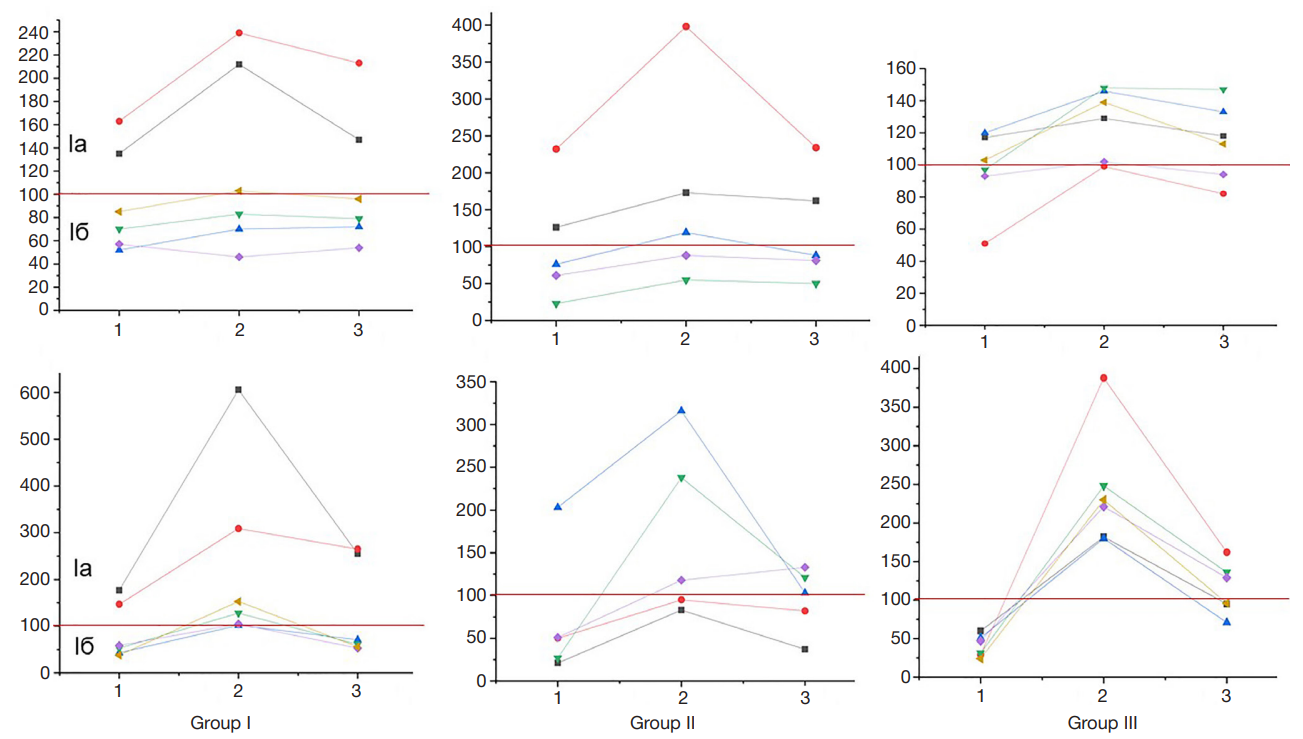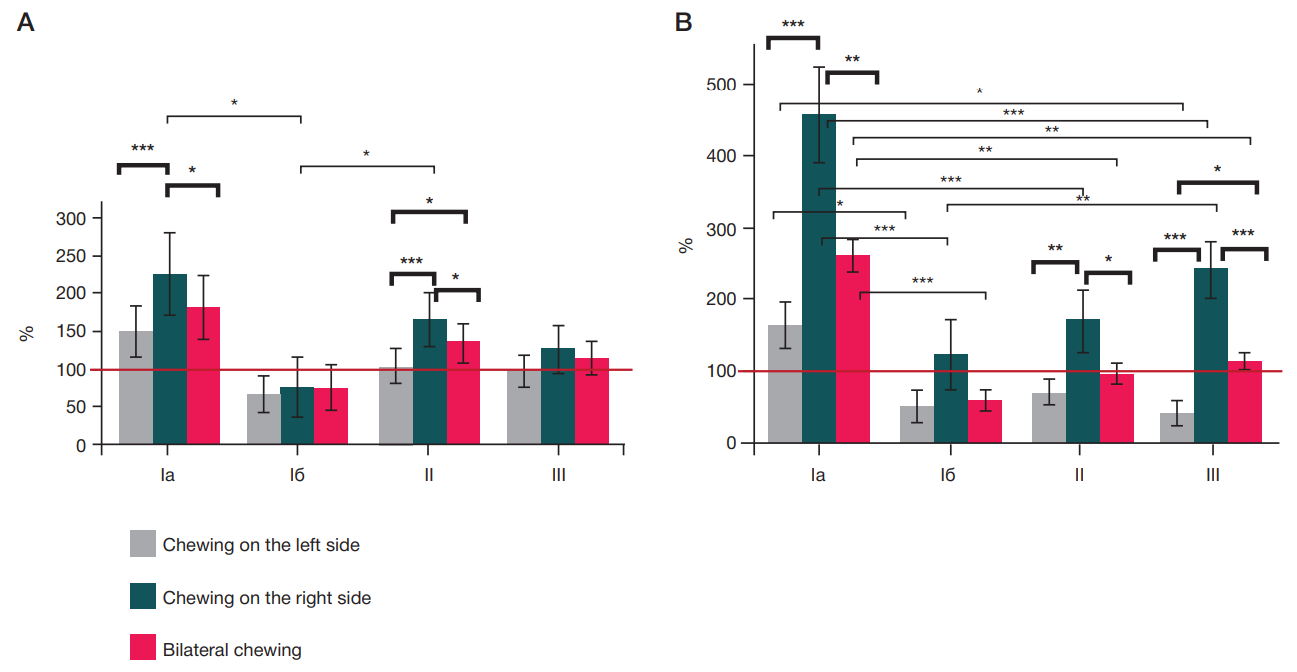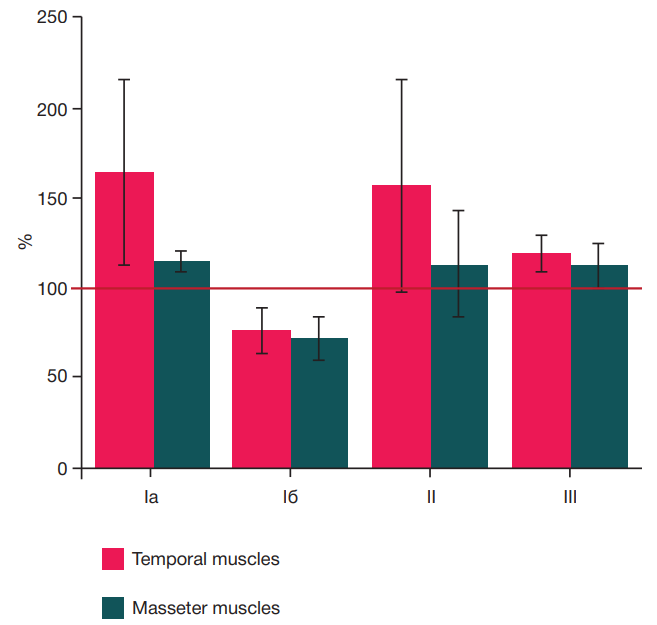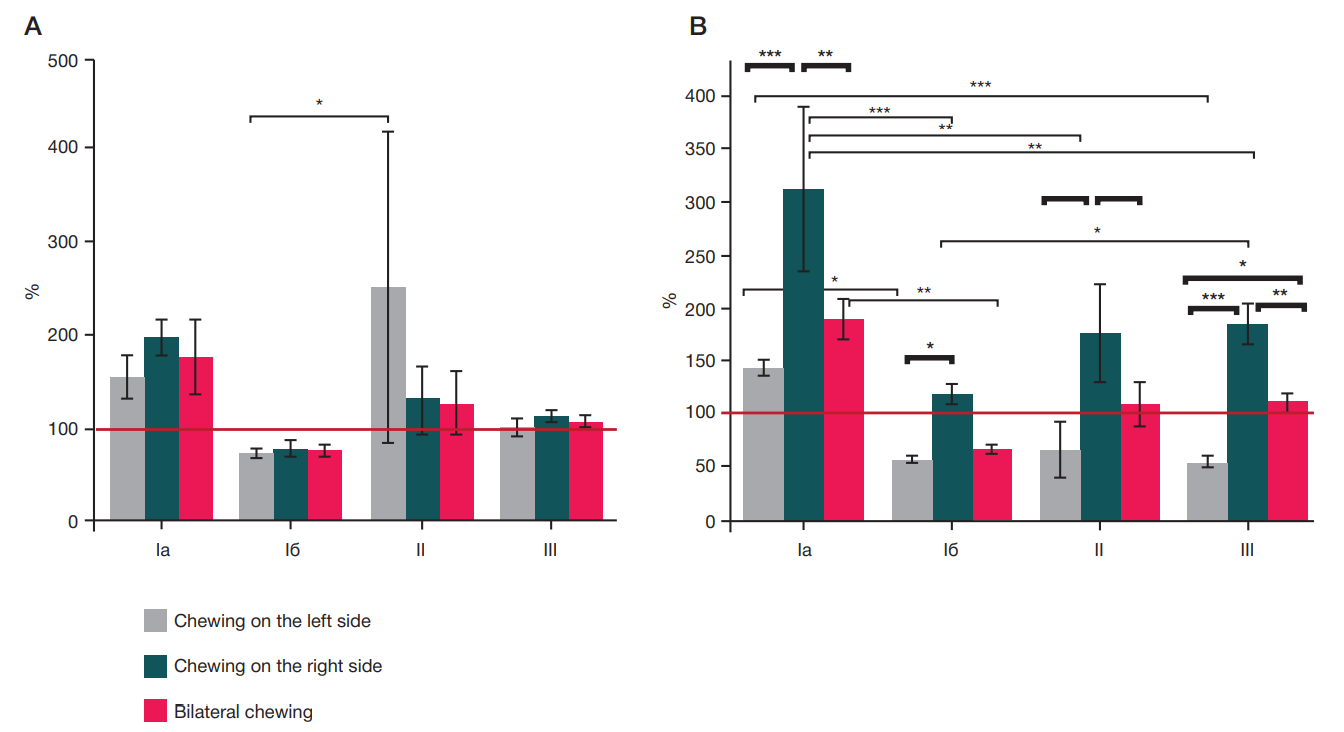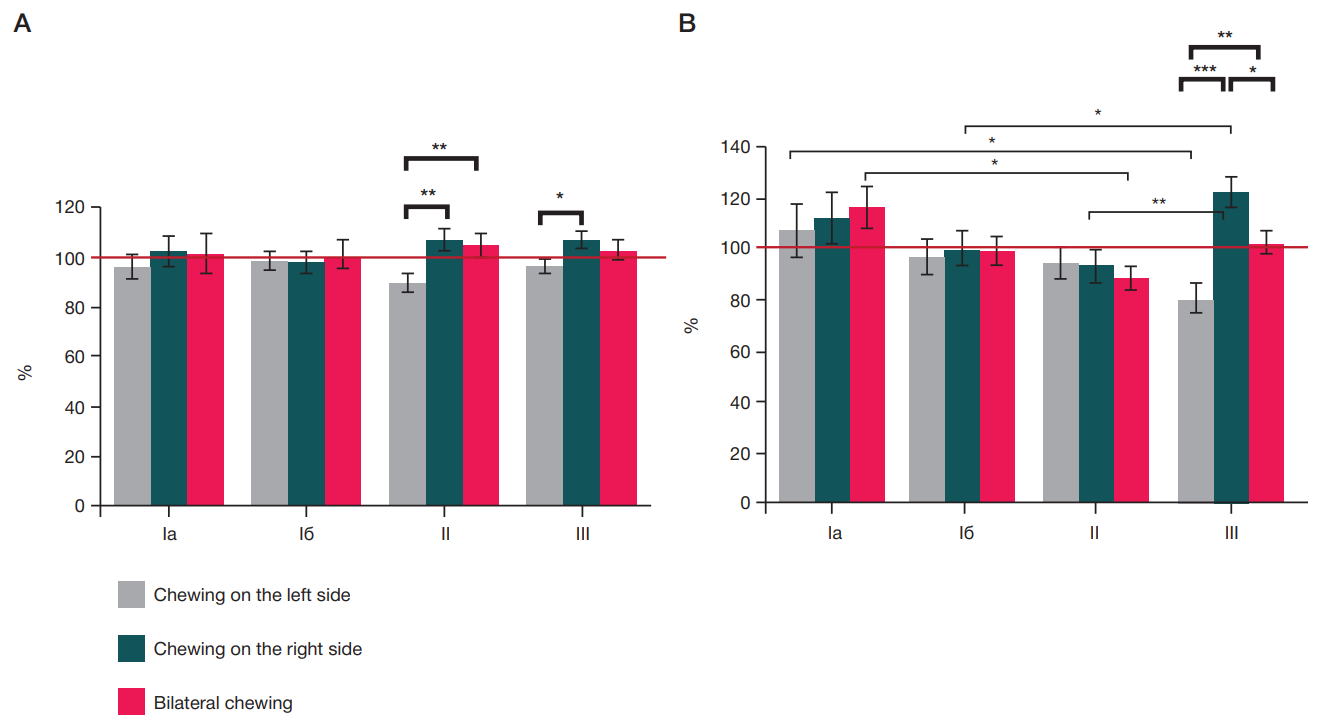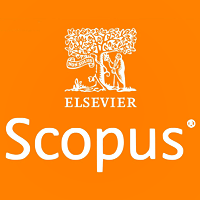
This article is an open access article distributed under the terms and conditions of the Creative Commons Attribution license (CC BY).
ORIGINAL RESEARCH
Individual features of the masticatory muscle bioelectrical activity in organization of chewing function
1 Pirogov Russian National Research Medical University (Pirogov University), Moscow, Russia
2 Institute of Higher Nervous Activity and Neurophysiology of the Russian Academy of Sciences, Moscow, Russia
Correspondence should be addressed: Olga Yu. Guseva
Ostrovityanova, 1, 117513, Moscow, Russia; ur.kb@avesug-o
Acknowledgements: we would like to thank Professor I.V. Pogabalo for advice on the methods to record and analyze electromyography data.
Author contribution: Shishelova AYu — study idea, concept and design, data acquisition and processing, statistical data processing, manuscript writing and editing; Guseva OYu — study concept and design, data acquisition and processing, literature review, manuscript writing and editing; Kopetskiy IS — manuscript editing and approval before publishing; Ansari V — data acquisition, literature review.
Compliance with ethical standards: the study was approved by the Ethics Committee of the Pirogov Russian National Research Medical University (protocol No. 250 dated 21 April 2025).
